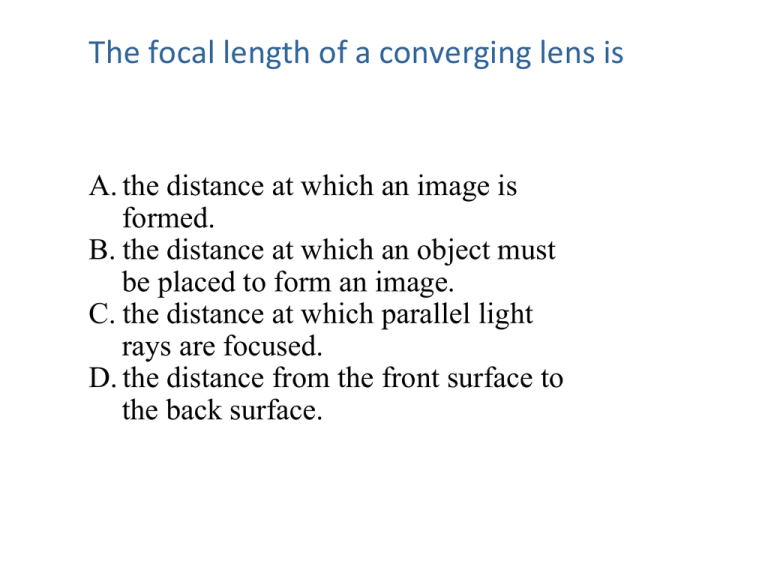The focal length of a converging lens is
advertisement

The focal length of a converging lens is A. the distance at which an image is formed. B. the distance at which an object must be placed to form an image. C. the distance at which parallel light rays are focused. D. the distance from the front surface to the back surface. The focal length of a converging lens is A. the distance at which an image is formed. B. the distance at which an object must be placed to form an image. C. the distance at which parallel light rays are focused. D. the distance from the front surface to the back surface. A virtual image is A. the cause of optical illusions. B. a point from which rays appear to diverge. C. an image that only seems to exist. D. the image that is left in space after you remove a viewing screen. A virtual image is A. the cause of optical illusions. B. a point from which rays appear to diverge. C. an image that only seems to exist. D. the image that is left in space after you remove a viewing screen. A paraxial ray A. moves in a parabolic path. B. is a ray that has been reflected from parabolic mirror. C. is a ray that moves nearly parallel to the optical axis. D. is a ray that moves exactly parallel to the optical axis. A paraxial ray A. moves in a parabolic path. B. is a ray that has been reflected from parabolic mirror. C. is a ray that moves nearly parallel to the optical axis. D. is a ray that moves exactly parallel to the optical axis. Mirrors Ray Diagram: A Mirror Imaging Forma=on by a Mirror Important Concepts EXAMPLE A goldfish in a bowl QUESTION: EXAMPLE A goldfish in a bowl EXAMPLE A goldfish in a bowl Applica<ons Major Rays Thin Lens: Focal Point & Length Thin Lenses: Ray Tracing Magnifying Glass/Virtual Image
